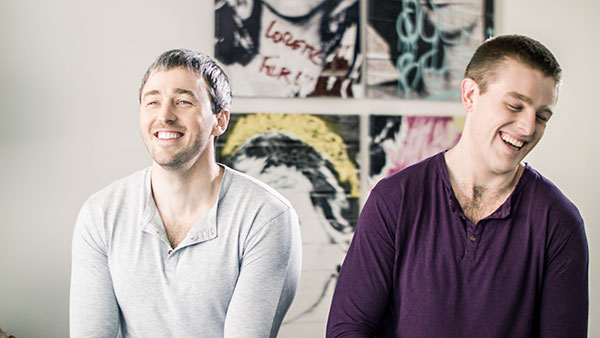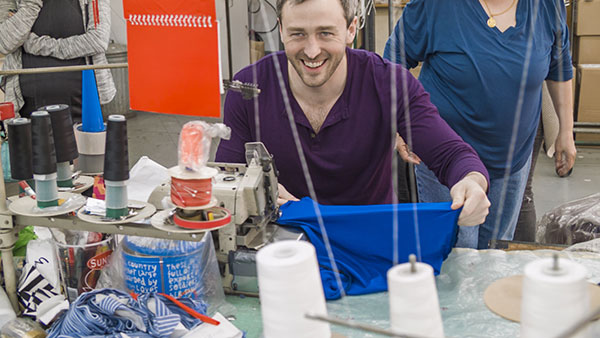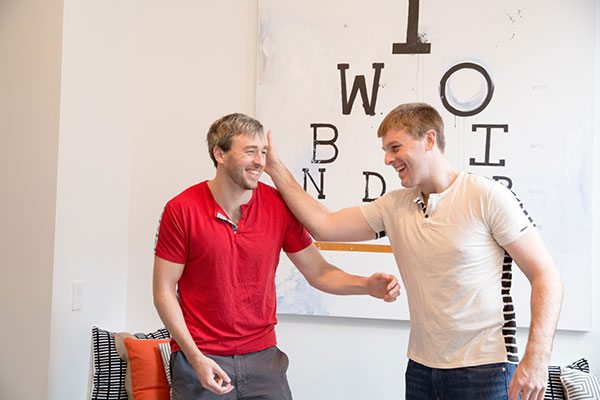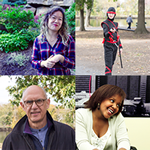Faces Behind the Screen: Two Blind Brothers
Quick Links
BRYAN: We were both diagnosed with Stargardt’s at the age of seven. Brad is five years older than I am. So he was diagnosed at seven, and then I was diagnosed also a couple years later when I turned seven.It’s interesting, though, at that age, you actually don’t have too solid of a frame of reference of what it actually means, and so you have to take the majority of your cues and you have to follow the guidance of your parents. They were always very supportive of us and always pushed us to try despite our visual impairment and never really allow it to be an excuse in our lives.
It had to be something that we had to overcome, which we’re still amazingly grateful for because it put us on a path that’s allowed us to experience so much and allowed us to try so much and not be too worried about failure or how visual impairment is going to impact any activity we do.
BRAD: I think one of the very tough things about these retinal eye diseases is when you’re diagnosed, it’s very confusing. You don’t know what to expect. You don’t know how to feel about it.
And so obviously, when we were young like Bryan mentioned, we took our cues from our parents. But I think growing up, we were each other’s kind of source of feedback. And we sort of played off of each other’s experience, and it wasn’t until we were older that we had a full appreciation that our experience was not necessarily everybody else’s.
BRAD: Bryan and I were both in New York working in separate careers. One day, we walked into a Bloomingdale’s, and we happened to buy the same exact shirt.
Part of the reason for that, other than a coincidence, is we lost each other in the store. If you’re blind or you’re vision impaired, touch is so important to you. So we just happened to feel the same, exact shirt that felt extremely soft. And so we bought it. And when we walked out, we had the same shirt. It was kind of funny. Of course, one of us had to return it.
Later that day, we were talking about how there is this vigilance of touch, and we decided it might be fun to create a small side project focused on making some soft clothes and giving those profits to the research [of vision loss].
So it started as sort of this fun side project, and then after we started to get a lot of attention on social media and through some of the news sources and the endorsements from Richard Branson and Ellen Degeneres, we sort of realized that we had to go at this full time to take advantage of this rare opportunity.
BRAD: When you’re young with Stargardt’s disease, you still have a lot of functional vision. You don’t really realize there are things you’re not seeing.
One of the first moments of struggling was in first grade. My mum had told me that if I couldn’t see something on the board, I could walk up to the board to see it.
I took that as anything else she sort of told me to do, but then I remember in class having to get up out of my desk to go a foot from the chalkboard to read what the teacher had written on it, and not seeing anybody else in the class getting up to do that. It definitely hit me then – something was different.
That’s definitely the first time that I remember feeling different
BRYAN: My personal struggle is I very rarely recognize somebody after meeting them for the first time. Because of my vision, you could be anybody from my mum to the Pope, and I wouldn’t quite know.
Thankfully, a lot of people are very understanding. It’s one of those things that if you know somebody’s low vision, it is beyond helpful to just say, “Hey, it’s John.” If you give me the name, I can actually place where we had a conversation. But recognizing the face is always a little bit tough.
Faces Behind the Screen is a storytelling project focusing on communities that benefit from a more accessible web.






